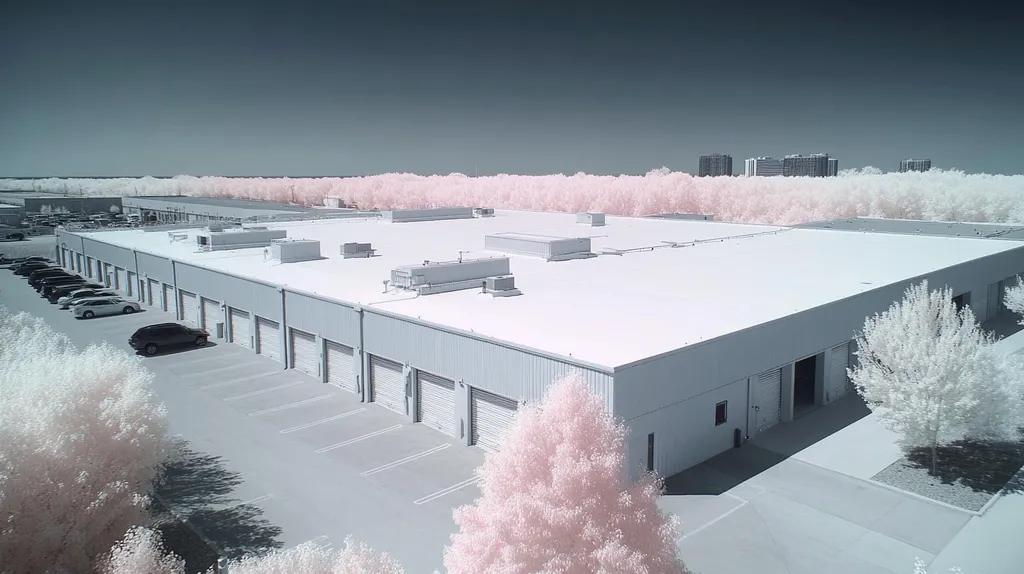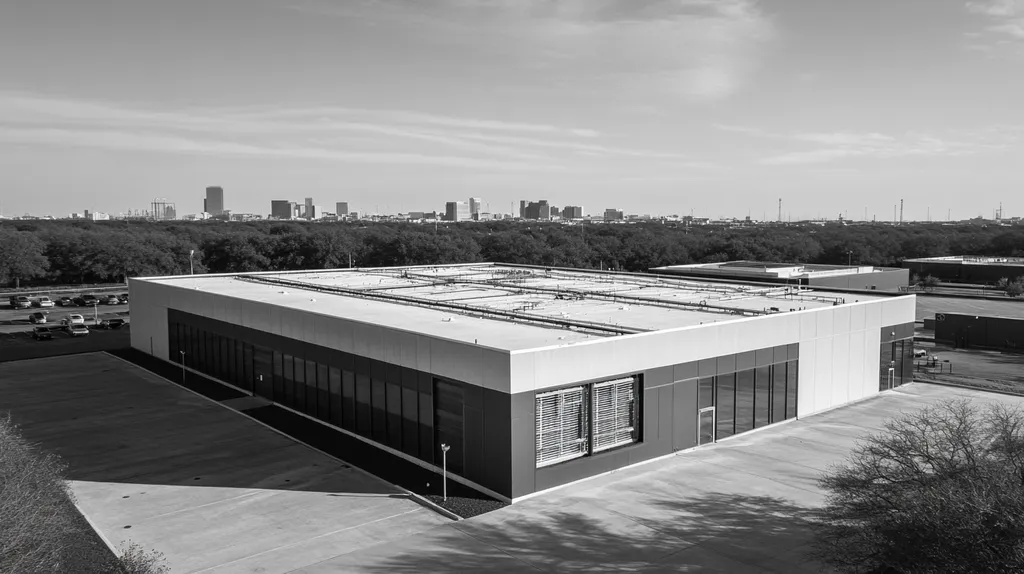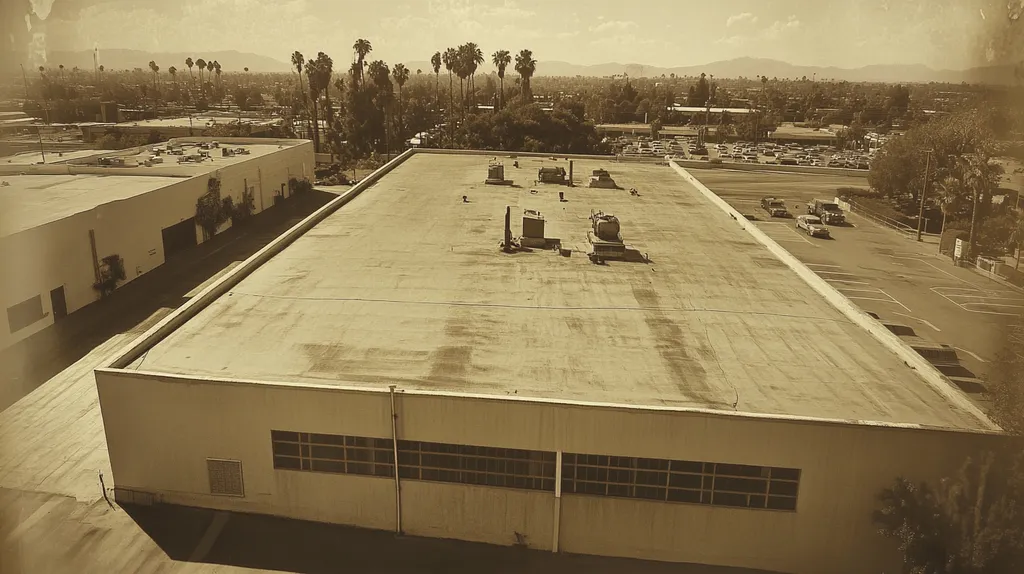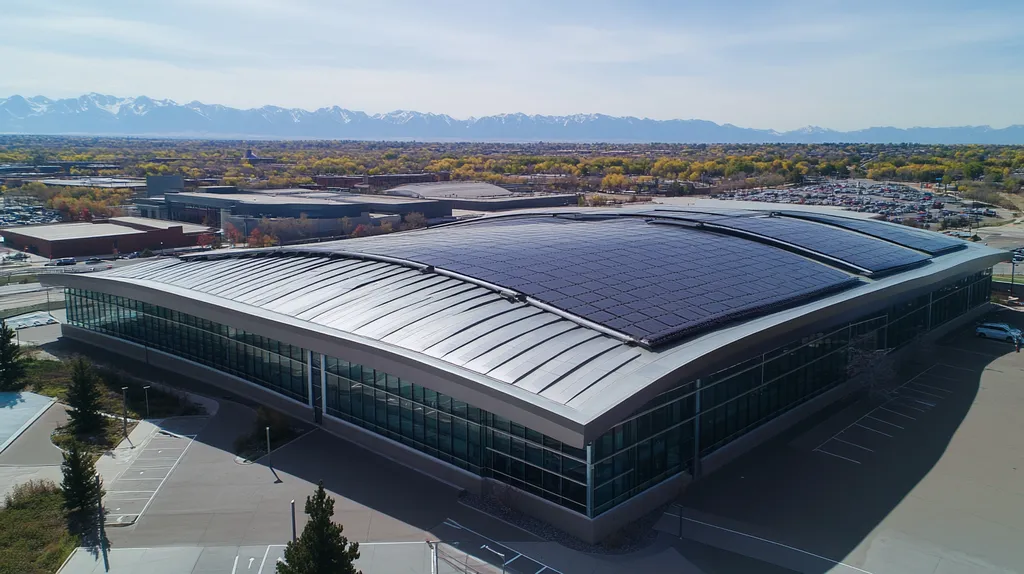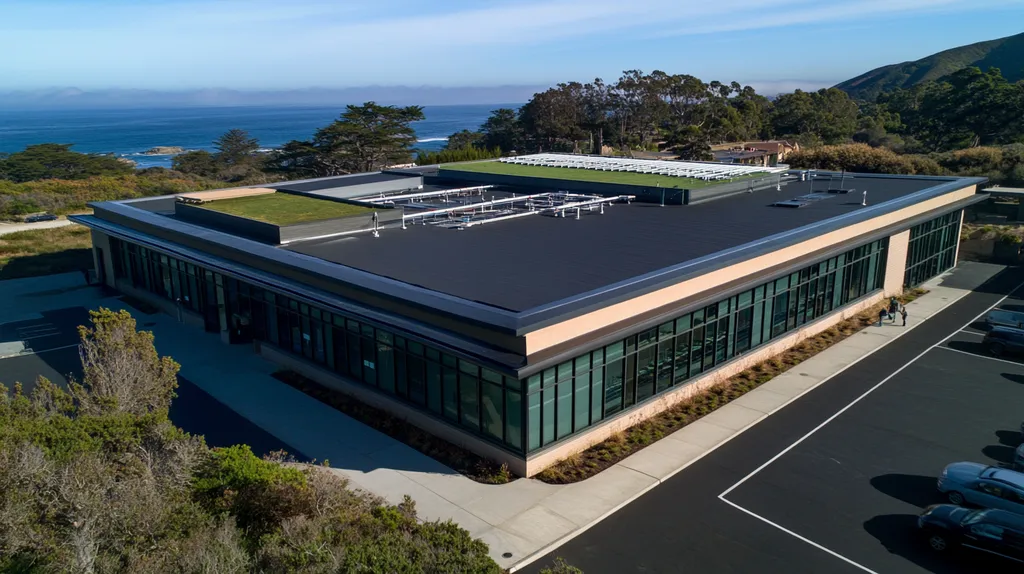In the complex world of commercial roofing, one oversight can cost property owners thousands: misunderstanding the special permit process. Studies show that 40% of commercial roofing projects face significant delays due to permit-related confusion, while 25% encounter costly penalties for non-compliance.
From myth-filled assumptions about reroofing requirements to misinterpreted local codes, the special permit landscape is riddled with potential pitfalls that can derail even the most carefully planned projects.
This comprehensive guide cuts through the confusion, offering property owners and facility managers clear, actionable insights into navigating the permit process while debunking persistent industry myths that could put their investments at risk.
SECTION 1: COMMON MISCONCEPTIONS
The commercial roofing landscape is crowded with misconceptions that, if misunderstood, can lead to unnecessary expenses and frustrating project delays. Alarmingly, studies show that roughly 30% of property owners overlook the significance of permits when embarking on reroofing projects. This gap in understanding might not only invite fines and legal hurdles but could even put the structure at risk. It’s vital for property owners and facility managers to grasp these myths and their potential impact on roofing endeavors.
Myth: No Permits Needed for Reroofing
One commonly held myth in the roofing world is that permits aren’t necessary for reroofing projects. This misconception can put property owners in a precarious position. Skipping the permit can lead to legal troubles, hefty fines, and complications with future insurance claims.
In fact, most local laws require permits for any substantial roofing work. For example, adding or replacing shingles typically calls for a permit. This isn’t just red tape; it ensures that the work adheres to safety standards and local building codes.
Additionally, undertaking roofing work without the required permits can jeopardize the installation’s quality. Inspectors play a crucial role in confirming that materials and techniques meet compliance standards, safeguarding both the property and the occupants.
Consequently, it’s essential for stakeholders to verify permit requirements before initiating any roofing project. This proactive step can greatly reduce risks and help ensure adherence to legal obligations.
Misunderstanding Sheathing Replacement Requirements
Another prevalent misconception is the assumption that replacing sheathing during a reroofing project is optional. This misunderstanding can lead to serious structural problems down the line. Many property owners might think that if their sheathing looks intact, it doesn’t need to be replaced.
However, a thorough inspection of the sheathing is critical. If moisture has made its way in, the underlying structure could be compromised, jeopardizing the roof’s overall integrity. Neglecting to replace damaged sheathing can lead to leaks, mold growth, and steep repair costs.
Moreover, building codes frequently require a permit if any sheathing is to be replaced. Overlooking this requirement can lead to penalties and extended project timelines. Conducting a comprehensive assessment of the roofing system can save property owners from costly future repairs.
In summary, a proper evaluation of sheathing is vital for long-term performance and compliance. Clear communication with contractors about this necessity can make all the difference.
Belief in Universal Permitting Standards
Many roofing professionals mistakenly believe that permitting requirements are consistent across all regions. This assumption can lead to unanticipated complications and delays in the roofing process. Local regulations can vary dramatically, affecting everything from the materials used to installation techniques.
For instance, what is permissible in one city may not meet the codes of a neighboring town. These discrepancies highlight the need for thorough research into local laws before launching any roofing project.
Moreover, failure to comply with local permitting standards can place projects at risk of non-compliance. This often results in redoing work, facing additional inspections, and incurring extra costs. Each municipality may have its own unique set of regulations and procedures that need to be followed.
Therefore, it’s crucial for commercial roofing professionals to educate themselves on local codes. Adequate planning and understanding of these requirements can streamline the permitting process and pave the way for successful project completion.
SECTION 2: PRACTICAL IMPLICATIONS
The special permit process for commercial roofing projects is often underestimated, but that can spell disaster for project timelines and budgets. Shockingly, nearly 30% of commercial roofing projects encounter delays because of misunderstandings surrounding permit requirements. It’s essential for property owners and facility managers to unveil the complexities of this process to prevent costly interruptions and remain compliant with local regulations.
Impact on Project Timelines and Delays
Grasping the timeline for securing special permits is crucial. Many property owners mistakenly assume that permit processing runs parallel with construction schedules, but that’s rarely the case. Permit approvals can span anywhere from weeks to several months depending on local laws.
These unexpected delays can throw project completion dates into chaos, resulting in soaring leasing costs or postponed occupancy. If modifications are requested during the review process, the clock can get reset on the entire project.
To mitigate these risks, stakeholders should weave the permit timeline into their project planning from the start. Being proactive can safeguard financial interests and align roofing projects with their desired timelines.
Furthermore, reaching out to local officials early in the planning phase can smooth the pathway to quicker approvals and keep the overall project on track.
Compliance with Local Building Codes and Regulations
Navigating local building codes is not optional—it’s a necessity. Every municipality has its own specific mandates regarding roofing materials, structural soundness, and environmental considerations. Ignoring these can lead to serious fines, redundant work, or even legal troubles.
For instance, a commercial building in a hurricane-prone region may require specialized wind-resistant materials. Without knowledge of these local compliance nuances, property owners risk investing in products that don’t meet the necessary standards.
Staying updated through regular training on evolving local building codes is vital for roofing professionals. A thorough grasp of these regulations ensures that projects not only comply but also avoid expensive last-minute changes.
Moreover, establishing solid communication with building inspectors sets clear expectations and helps roofing teams stay one step ahead of compliance demands.
Consequences of Insufficient Documentation
Insufficient documentation can grind roofing projects to a halt and draw the ire of regulatory bodies. Comprehensive, detailed records are indispensable for proving compliance with permit obligations.
Without adequate documentation, projects might face extended review cycles or could be outright rejected, complicating budgets and timelines. For example, missing design plans can lead to additional information requests from permitting authorities.
Property owners should diligently maintain clear records of all project-related documentation, from design sketches to correspondence with officials and permit submissions. This meticulous approach helps navigate potential bureaucratic obstacles with greater ease.
In the end, investing time in thorough documentation not only speeds up approval processes but builds a foundation of trust with local regulators, paving the way for smoother future projects.
SECTION 3: COST OF MISINFORMATION
The toll of misinformation in the special permit process for commercial roofing is staggering. When property owners and facility managers operate under incorrect assumptions, they risk financial penalties, inflated maintenance costs, and potentially losing valuable warranties. Navigating through the maze of regulations inaccurately can significantly increase project budgets and timelines. This section illuminates the serious implications tied to misinformation in commercial roofing.
Financial Penalties for Non-Compliance
Understanding and adhering to local building codes is not just ideal; it’s essential. Misinterpretation of these codes can result in steep fines from local regulatory bodies. For instance, a commercial roof that fails to meet energy efficiency standards might face penalties peaking at over $10,000.
Moreover, not obtaining required permits can halt construction, pushing timelines back and elevating costs associated with labor and materials. Prolonged projects due to enforcement issues can inflate total costs by as much as 30%.
Securing permits retrospectively is often more expensive than acquiring them initially, creating a ripple effect that can drain financial resources and disrupt planned projects.
Ultimately, grasping and following the proper permit protocols is a safeguard against financial wastage, ensuring a more straightforward and efficient project flow.
Increased Maintenance and Repair Costs
Misinformation can lead to poor decisions regarding roofing materials and installation methods. For instance, opting for budget-friendly roofing systems without recognizing long-term impacts can cause premature wear and tear, resulting in extra expenses running into thousands of dollars.
Poorly installed roofs without the right checks may go undetected until they start leaking or developing structural issues—often doubling repair costs in just a few years.
Additionally, roofs that breach building codes typically experience significantly shorter lifespans. The need for more frequent inspections and repairs places a heavier financial burden on facility management budgets. The link is clear: misinformation translates directly into escalating costs.
By proactively understanding the permit process, property owners can help keep maintenance and repair costs in check while safeguarding their investments.
Loss of Warranty Validity
Most roofing materials come with warranties promising durability and performance, but misunderstandings about the special permit process can void these essential protections. For example, installing without the proper permits might lead manufacturers to deny warranty claims.
When major issues like leaks occur, property owners may find themselves facing substantial repair expenses, often reaching tens of thousands of dollars.
Additionally, warranty claims often demand proof of compliance with local installation standards, so lacking the right permits complicates any attempts to seek compensation for damages.
In essence, misinterpreting the special permit process can undermine the very safeguards warranties are intended to offer, making comprehensive knowledge crucial for protecting both finances and the structural integrity of commercial roofing systems.
SECTION 4: REALITY CHECK
Navigating the commercial roofing landscape isn’t just about choosing the right materials; it’s also about understanding the regulatory web that accompanies every project. Failing to grasp local permitting requirements can derail a project, leading to penalties and significant delays. Recent studies indicate that nearly 30% of roofing projects hit roadblocks due to misunderstanding local codes. This section highlights the importance of recognizing permitting nuances, the crucial role of engineers, and why hiring registered contractors is non-negotiable for the success of roofing endeavors.
Understanding Local Permitting Requirements
Local permitting requirements are the backbone of any roofing project. Each municipality has specific regulations that dictate which materials can be used and how modifications should be made. Ignoring these guidelines can result in halted work, fines, or even mandatory removal of completed work.
For instance, some areas stipulate special inspections for certain roofing materials, necessitating strict adherence to local safety standards. Projects may face frustrating delays if a property owner doesn’t familiarize themselves with these rules early in the planning process.
To prevent complications, property owners should consult local government websites or engage experts well-versed in these codes. This collaboration not only enhances project efficiency but ensures compliance with regulatory requirements.
Ultimately, a complete understanding of local permitting can safeguard investments and promote timely project completion. Wasted resources and future renovation jeopardies can all stem from a disregard for these vital regulations.
Role of Engineers in Verifying Load Capacity
Engineers are indispensable partners in any commercial roofing project, as they evaluate the load capacity that roofs must withstand. From heavy snow loads to equipment weight, roofs experience a variety of stresses that must be calculated before installation.
For example, an older structure may need reinforcements to safely accommodate a new roof system. By identifying potential weaknesses upfront, engineers help prevent detrimental structural issues later on and ensure compliance with local codes.
This proactive approach not only saves time and money down the road but also mitigates risks associated with insurance liabilities for property owners. Investing in an engineer’s expertise enhances the safety and longevity of the roofing system.
Ultimately, qualified engineers make sure the roof can handle its anticipated loads, preserving the long-term value of the property.
Importance of Registered Contractors
Hiring registered contractors is a crucial element in ensuring commercial roofing success. These professionals are not only familiar with the latest codes and regulations, but they are held to higher standards, minimizing the risks associated with roofing projects.
For example, registered contractors often have access to specialized training, allowing them to handle complex installations more effectively. Their expertise in securing permits streamlines the entire process, reducing potential interruptions.
Moreover, working with registered contractors brings peace of mind, as these professionals usually carry adequate insurance and licenses, which protects property owners against unforeseen issues during or after the project.
In conclusion, engaging with registered contractors not only guarantees adherence to industry standards but also safeguards investments, ultimately resulting in a more efficient and successful roofing project. Property owners should prioritize due diligence when selecting contractors to maximize project outcomes.
SECTION 5: EVIDENCE-BASED ALTERNATIVES
In the fast-paced world of commercial roofing, every minute counts. Delays linked to the special permit process can drain thousands from property owners’ pockets in lost revenue. Fortunately, innovative alternatives are available to streamline projects, keep budgets intact, and minimize downtime. In this section, we delve into leveraging pre-purchased reroof permits, committing to routine inspections, and selecting climate-appropriate materials for maximized efficiency.
Using Pre-Purchased Reroof Permits Efficiently
Pre-purchased reroof permits are a game changer for commercial property owners looking to speed up their roofing projects. These permits are bought in advance, allowing roofing work to kick off without the usual waiting game linked to conventional permit approvals. Property owners can incorporate these permits into their budget planning, paving the way for more accurate financial forecasts.
Additionally, securing permits ahead of time enables roofing contractors to organize their projects without interruptions. This proactive planning not only saves valuable time but also boosts satisfaction for everyone involved. In certain areas, it’s even possible to buy these permits in bulk, resulting in cost savings for larger-scale roofing efforts.
By embracing pre-purchased permits, property managers can significantly reduce the risks associated with delays, aligning their roofing needs closely with operational schedules and business cycles.
Implementing Routine Inspection Schedules
Establishing regular inspection schedules is vital for preserving the integrity of commercial roofs and avoiding costly repairs. By identifying problems early, property owners can tackle minor issues before they balloon into major complications—saving both time and money in the long run.
Routine inspections can take place semi-annually or annually, focusing on assessing roof conditions, drainage systems, and the impact of weather-related wear. This proactive approach minimizes disruptions and harmonizes with seasonal maintenance needs.
Moreover, these inspections create detailed documentation, which can simplify permitting processes for future modifications. Prioritizing routine maintenance encourages longer roof lifespans and maximizes return on investment, ensuring roofs remain reliable defenders for businesses.
Selecting Appropriate Materials for Climate
The choice of roofing materials directly influences project timelines and long-term performance. Opting for materials tailored to local climates reduces the chances of premature failures and unexpected maintenance costs. For instance, in hot regions, reflective materials can decrease heat absorption, while more robust options are essential in areas facing extreme weather events.
Selecting the right materials not only minimizes risks but also contributes to the longevity of roofs. Additionally, advanced roofing solutions—such as energy-efficient membranes—not only enhance durability but also lower energy bills, aligning with environmental sustainability goals.
By making informed material choices, property owners optimize project efficiency while creating roofs that are better suited to withstand the elements, benefiting both their operational strategies and the planet.
SECTION 6: TEST AND VERIFY
In the world of commercial roofing, skipping inspections is akin to taking a stroll on thin ice. The costs of neglecting required inspections can send property owners and facility managers into a financial free fall, potentially leading to unsafe structures and legal headaches. A staggering 70% of roofing projects that bypass inspections encounter significant issues within just five years. In this section, the vital roles of thorough inspections, diligent documentation, and adherence to proper installation techniques will be unpacked to ensure a robust and compliant roofing project.
Scheduling and Conducting Required Inspections
Coordinating timely inspections throughout the roofing process isn’t just a checklist item—it’s a critical step for compliance. Depending on the special permit, certain inspections may be mandated at different stages, such as before the shingles are installed or following any structural modifications. Adhering to this inspection schedule safeguards property owners from future complications.
Engaging early with local building authorities helps clarify mandatory inspections. Establishing open lines of communication with inspectors allows for prompt addressing of concerns, smoothing out the project timeline. Aligning a clear inspection schedule with the overall project can prevent hiccups that disrupt progress.
Neglecting this important aspect can lead to disastrous outcomes. Overlooked issues during an initial inspection can snowball into structural failures and liability challenges. By prioritizing inspections, transparency and confidence between contractors and property owners flourish.
Ultimately, making inspections a cornerstone of the roofing strategy boosts compliance and enhances the project’s overall success.
Verifying Compliance Through Documentation
Documenting every aspect of the roofing process is not just good practice; it’s vital for ensuring compliance. Every inspection report, material receipt, and communication with contractors should be carefully organized. This level of documentation acts as proof of compliance with local regulations and permits.
Property owners should actively request certificates of compliance from contractors at key project milestones, confirming that all work adheres to required standards. These documents are also invaluable for future permits or resolving any disputes regarding the roofing project.
Implementing electronic filing systems can dramatically streamline the documentation process. This technology not only keeps information organized but also ensures easy access for all project stakeholders. Real-time updates and cross-referencing become simpler and more efficient.
Inadequate documentation can compromise the project’s integrity. Establishing robust documentation practices shields property owners from potential liabilities and secures their investment.
Ensuring Proper Installation Techniques
Proper installation techniques are the bedrock of a triumphant roofing project. Even with permits and inspections nailed down, shortcuts during installation can lead to future headaches. Following best practices outlined by manufacturers is essential for maximizing performance and securing compliance.
Each roofing material comes with specific installation guidelines that shouldn’t be overlooked. Following these directives is crucial to avoid costly leaks and insulation failures. For instance, employing the right underlayment can significantly enhance a roof’s resilience against environmental challenges.
Additionally, relying on qualified professionals with expertise in local codes and installation standards minimizes risks. Their knowledge is indispensable for navigating installation challenges, ensuring roofing systems operate effectively.
In conclusion, verifying that proper installation techniques are followed is key to prolonging the roof’s lifespan and functionality. Ignoring this aspect can lead to expensive repairs and increased liability, making it a critical consideration in the roofing process.
The Bottom Line
The special permit process remains a critical yet often misunderstood aspect of commercial roofing, with studies showing that 40% of projects face costly delays due to permit-related oversights.
Property owners who dismiss these requirements risk fines reaching $10,000 or more, along with potential structural failures that can compromise entire buildings.
The path forward demands a three-pronged approach: understanding local permitting requirements, maintaining comprehensive documentation, and partnering with registered contractors who understand regional codes.
By embracing these evidence-based practices rather than relying on industry myths, facility managers can protect their investments while ensuring their roofing projects meet all necessary safety and compliance standards.
The stakes are simply too high for anything less than full compliance with special permit processes in today’s commercial roofing landscape.
FREQUENTLY ASKED QUESTIONS
Q. Do I need a permit for my commercial roof project?
A. Yes! Most local laws require permits for significant roofing work. Obtaining the right permits not only helps avoid fines but ensures compliance with safety standards that protect the entire structure.
Q. How can the special permit process delay my industrial roof project?
A. The special permit process can take weeks to months, often causing project delays. If changes are required during reviews, it can reset your timeline, impacting budgets and occupancy plans significantly.
Q. What are the financial penalties for misinformation regarding permits?
A. Financial penalties for non-compliance can reach up to $10,000. Additionally, labor and material costs can rise significantly due to potential project delays that result from issues with permits and inspections.
Q. How important are local building codes for a commercial roof project?
A. Local building codes are crucial as they dictate material use and installation techniques. Ignoring these regulations can lead to halted work and hefty fines, causing project delays and added frustrations.
Q. How can I streamline the permitting process for my commercial roof?
A. Securing pre-purchased reroof permits can significantly speed up your project. By buying them in advance, you reduce wait times and better align your roofing work with company schedules.
Q. Why should I conduct routine inspections on my commercial roof?
A. Routine inspections help identify small issues before they escalate into major problems. By catching these early, you save money on repairs and extend the lifespan of your roof, maintaining its protective quality.
Q. How do I choose the right contractor for my roofing project?
A. Choosing a registered contractor ensures expertise in local codes and high standards. They are trained to navigate permits efficiently, reducing potential issues during the project and ensuring compliance with regulations.

